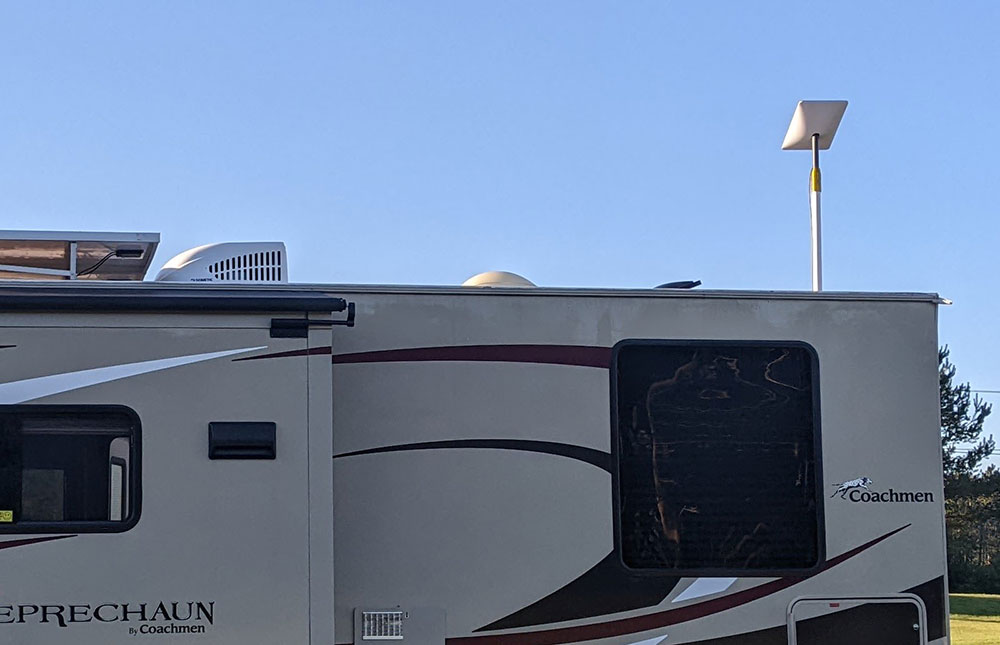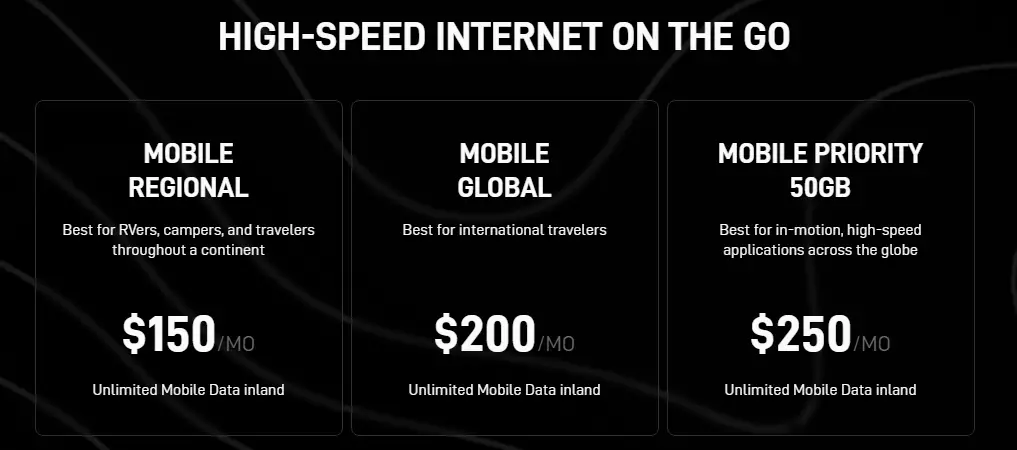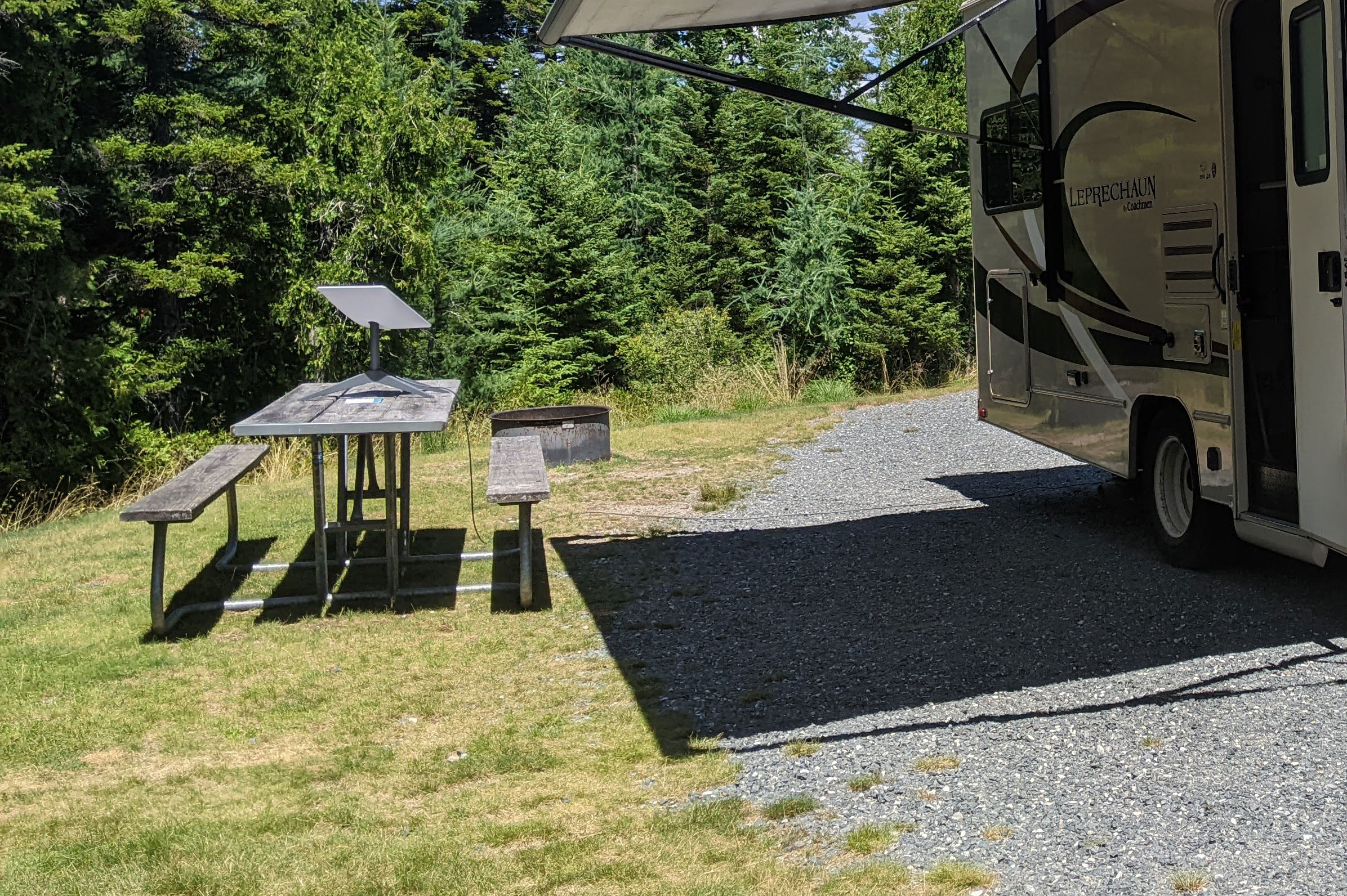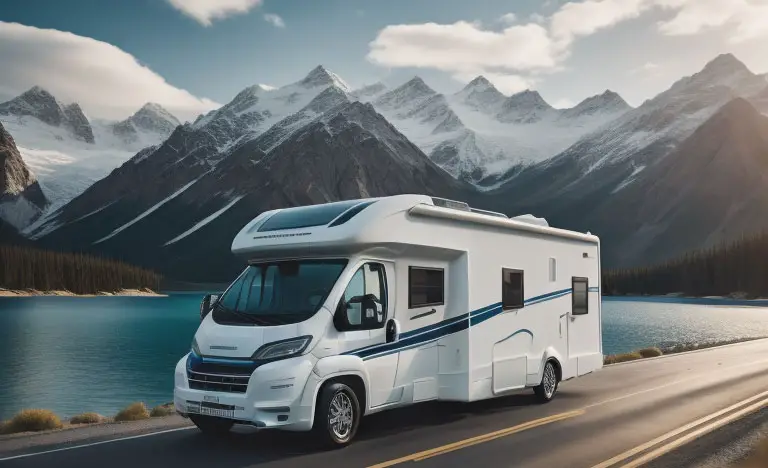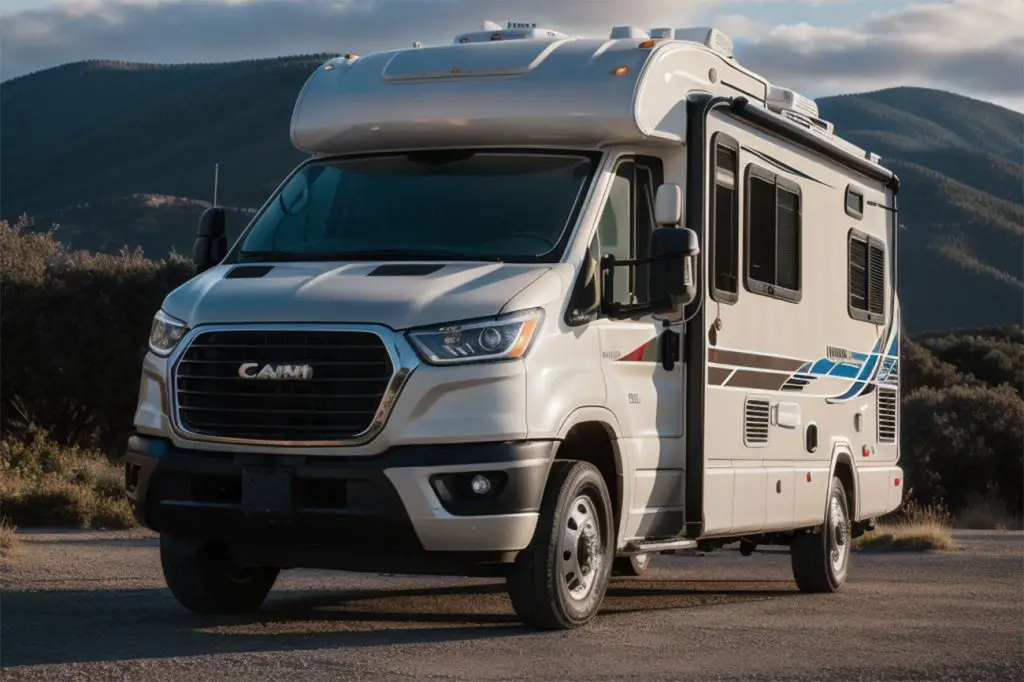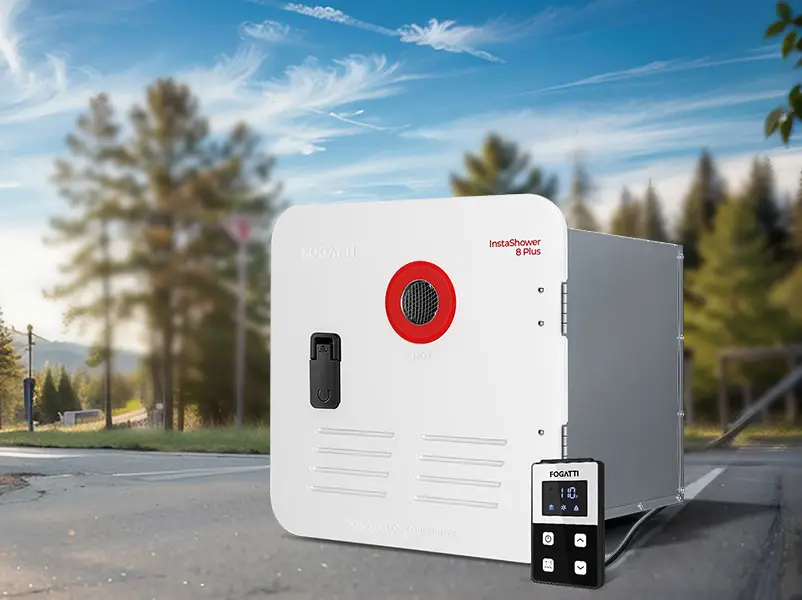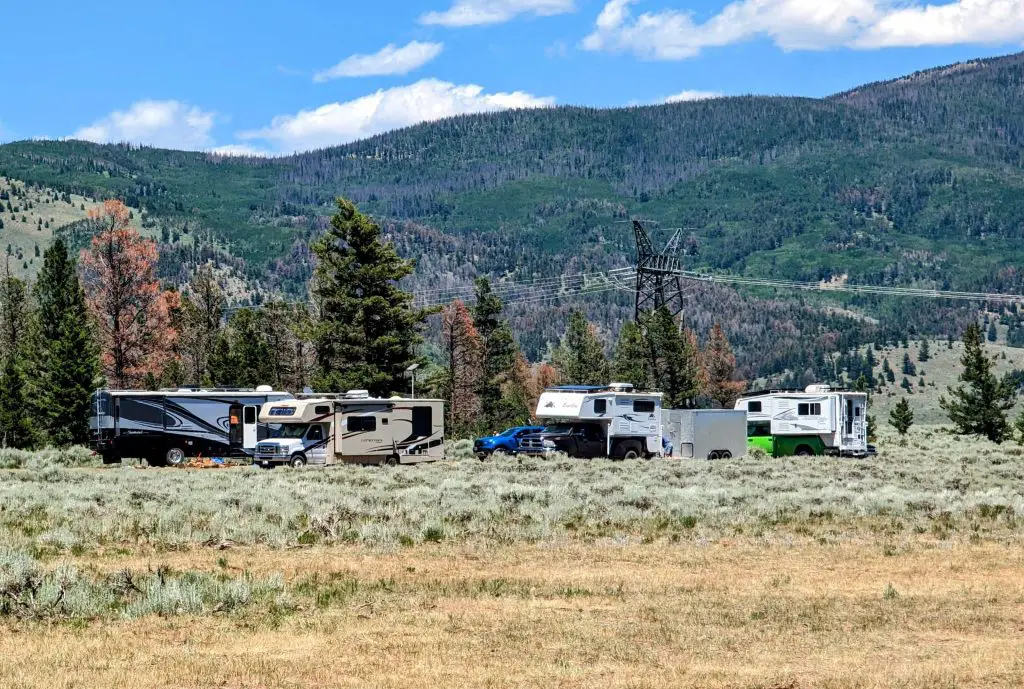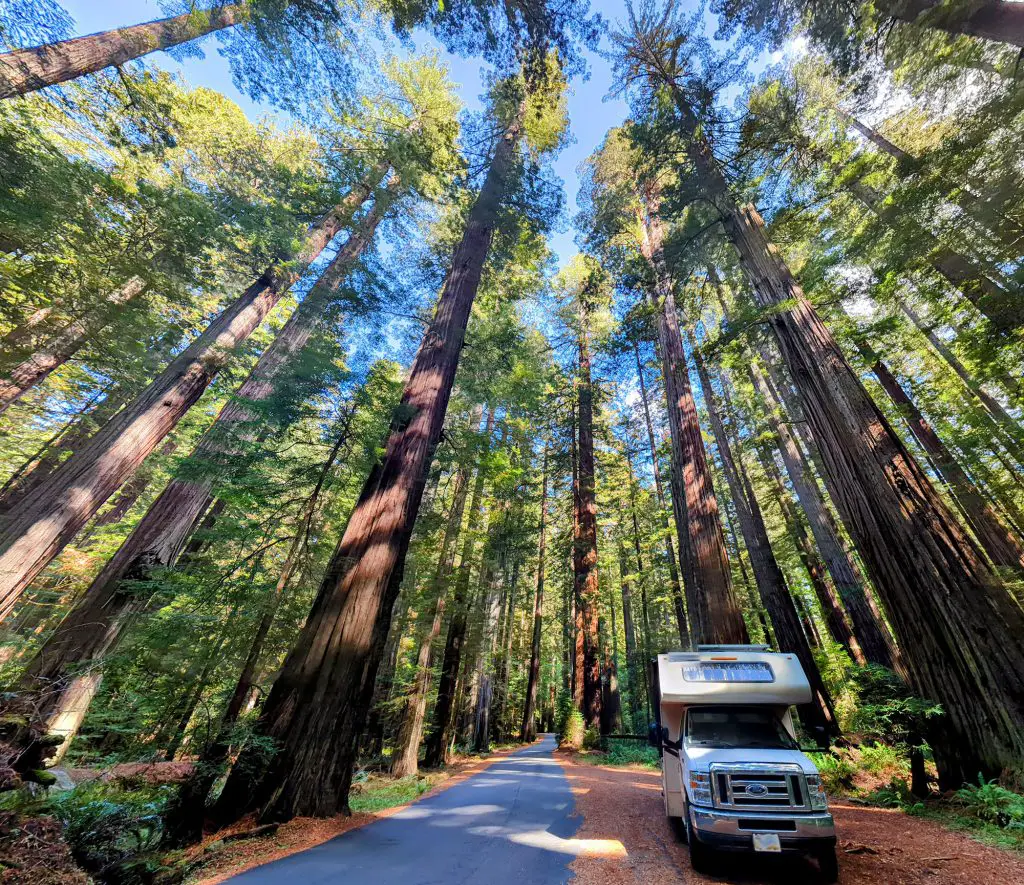Last Updated on April 24, 2024
Key Takeaways:
- Starlink offers RVers reliable internet connectivity, enabling work and leisure while traveling.
- Despite some limitations and costs, the benefits of staying connected in remote areas outweigh the drawbacks for many users.
- Cost and Setup: $120-$150/month with speeds of 50-250 Mbps; $599 one-time equipment fee. DIY installation requires a clear view of the northern sky. There are also other different packages.
- Benefits: Portability and convenience for travelers. Reliable internet access anywhere, even in remote locations. Consistent speeds and low latency. Suitable for off-grid living and work.
- Limitations: Requires clear sky view, may face deprioritization in crowded areas. Initial costs and ongoing fees may be high. Power consumption considerations for boondocking
Over the past few years, more and more people have become digital nomads and working in different parts of the country. RVers are digital nomads as well, living inside the comforts of our motorhomes or vans and traveling around while we still work.
The thing about being on the road is that a reliable internet connection isn’t always a given. There are times when internet connections are intermittent and this can’t exactly be a good thing for anyone who relies on the internet each day.
This is where Starlink comes in. Having a reliable internet connection is a must in this technological age, so having access to this at all times, especially when you’re on the road or in a remote area, is non-negotiable.
Importance of the Internet for RVers
Numerous people are living in RVs and travel to different places and campsites. Those who are working remotely know all too well the importance of having reliable and stable Internet connections while they’re staying in the RV. Also, we need the internet for everyday shopping and streaming our entertainment, and it’s a way to keep us in the loop of all the happenings in the outside world.
Having a solid Internet connection lets you stay on top of all the work-related things, you can stay updated on office meetings, run your business on the road, engage with your audience, and more.
What is Starlink and How Does It Work?
Starlink is considered one of the most advanced broadband satellite systems that deliver internet coverage and connection in the world. This technology is developed by SpaceX to provide affordable internet to remote locations.
Starlink’s offering works by sending the necessary information through space, allowing it to travel faster compared to other types of internet connections that make use of fiber optic cables.
With Starlink utilizing satellites in low orbit, the transmission and roundtrip transfers between the user and the satellite in question are much lower. This results in satellite broadband systems that equip consumers with a more expansive reach, even in some of the most remote places. This also enables users to get services that they won’t get with other satellite broadband services, such as high-speed, low latency services and even gaming services.
Since we’re talking about RVs and those who live in them and still want an internet connection, we’re zoning in on the Starlink RV service provided by the company. Starlink RV Internet lets you get mobile internet capabilities and this is specifically made for people who are always traveling in their travel RVs.
The Cost of Owning and Using Starlink
Starlink provides and even emphasizes its low-cost offering. However, the price for this particular service can be viewed in relative terms, with affordable being different.
Starlink for RVs is priced at $120-$250 per month depending on the package you choose. This already gets you approximately 30 to 250 Mbps. If you have the roam service, you can pause your service whenever you need, giving you more control over your Starlink internet use. The cheapest is the residential service which is $120/Mo. Packages and availability change all the time, you should check out Starlink.com for the latest info.
Besides the monthly fee, there is, however, a one-time equipment fee that will set you back $599 and this needs to be paid upfront. After making a payment, you’ll receive your Starlink kit which already includes everything you need. This already includes the satellite antenna dish, a tripod stand for the antenna, a router, a power supply, and its connecting wires.
What You Need to Know
Starlink RV kits are already pre-connected to everything you might need to make setups easier. To make it work, however, you do need to download an app. This is available for both Android and iOS users which they can download on the Google Play Store or on the App Store.
To make the Starlink RV work, you should bear in mind that it’s essential to have a clear view of the sky so that you can receive a signal. This means that the area or campsite that your RV is in should be free from canyon walls, trees, and the like so that you can get a strong signal.
Generations of Starlink Antennas
The Gen 1 Starlink Antenna was the initial version deployed by SpaceX for its Starlink satellite internet service. It featured a circular dish design with a diameter of about 19 inches. The Gen 1 antenna required manual adjustment to optimize signal reception, making installation and setup a bit more challenging for users. Despite some limitations, it provided users with access to high-speed internet in remote locations, offering a significant improvement over traditional satellite internet options.
On the other hand, the Gen 2 Starlink Antenna represents an evolution of the original design, incorporating several improvements based on user feedback and technological advancements. It features a rectangular dish design with a smaller form factor compared to its predecessor. One of the key enhancements is the inclusion of automated or phased-array technology, enabling the antenna to track and maintain a connection with Starlink satellites without manual adjustments.
The Gen 3 Starlink represents a significant advancement in satellite internet technology, integrating sleek aesthetics with cutting-edge features. With Wi-Fi 6 capabilities, advanced phased-array antenna technology, and expanded frequency bands, it promises faster speeds, increased reliability, and enhanced performance. Compared to its predecessors, the Gen 3 dish offers improved portability and user-friendly setup, making it a more compact and versatile option for receiving signals. The latest generation of Starlink antenna has drawn some criticism for its increased power consumption, requiring around 100W/hr, and slightly larger size compared to previous versions.
Benefits Offered by Starlink
Portability and Convenience
One of the advantages that Starlink for RVs has to offer is its convenience and portability. This allows you to travel and enjoy your stays in your recreational vehicle while still enjoying all the comforts of your home.
Starlink is a great option for RVers who travel to different locations and campsites yet still want to stay on the grid while on the road.
Internet Connectivity Wherever You Go
Digital nomads who work while they’re in their RV no longer have to worry about having no Internet connection. With Starlink, you can work online and even get to enjoy the mountains and the scenic locations without having to sacrifice one for the other.
Consistent Speeds
Another great thing about Starlink is that you can get fast and consistent speeds each and every time you use it, even in the most remote locations. It supports broadband download speeds of up to 200 Mbps and more. Even with a number of devices using the network all at the same time, this won’t have an effect on the speeds you’re getting.
Fast Data Transmission
Even without cell towers in the area, you’ll be comforted knowing that the Starlink satellites work even in off-grid and remote areas, making it the perfect companion for when you want to work in far-off places.
These data transfers are made possible by the low latency feature that Starlink highlights, meaning you’ll get little or fewer delay times compared to traditional fiber connections.
Cons
Requires Self-Installation In Each New Location
Starlink does require installation and you’ll need to do this if you tend to move campsites or locations a lot. Although this might be the case, it’s worth pointing out that this does not require professional installation. For each new location you go to, you will need to set it up which usually takes 15-20 minutes and you’re good to go. The modem stays inside, the antenna goes outside and they need to be connected. You will need to think of options for the cable. I put it through my passenger side window closing the window as much as I can. There are RVers, who have the option to put through their outside storage or steps. Some even drill a hole for it.
I need to note that many RVers are mounting their Starlink on the roof in which case you won’t need to worry about installing it in new locations. However, there are times in campgrounds when your rig sits under the tree and it is better to have that antenna mobile so you can set it up away from the rig in a location with a clear view of the sky.
Requires decent amounts of power
AC electricity is a must. What I noticed it uses about 40 Watts per hour. If you are boondocking, you need to have probably one extra battery and more solar power just for running your Starlink 24 hours a day.
Clear View Of Northern Sky
As previously mentioned, for the Starlink RV to work, you need to have an uninterrupted view of the sky. This means that the campsite you’ve chosen should have little to no obstructions and you should have a clear view of the sky facing North. If you don’t have a clear view of the sky, your connection will depend on the size of the obstructions. Your internet service will be cut sometimes for seconds or even minutes which is really bad if you have to be on Zoom calls or you require uninterrupted service. In my experience, smaller obstructions are still ok if you just need to use the internet for general browsing or you are streaming for example Netflix.
With this in mind, steering clear of trees, canyon walls, and the like will help you yield better service. While the Starlink offering for RV users allows you to connect in various locations, bear in mind that connections might be more challenging to come if you are in a wooded area. Many campgrounds are heavily wooded, in these locations, I was unable to use my Starlink and had to rely on cellphone reception.
Limitations
The more popular Starlink gets, deprioritization can be an issue. The RV package is deprioritized in locations where there are many Starlink users. In these instances, I saw speeds of 1-2 Mbps.
Can be Quite Pricey
Starlink does get pretty pricey, especially at the onset when you’re buying the kit and the equipment that comes with it. Although the initial cost can be quite high, the benefits it will afford you over time might be a good point to consider. It opens lots of doors in areas where you weren’t able to stay before.
The Bottom Line
Starlink is one of the unique networks that offer RVers the opportunity to stay connected and work while on the road using their satellite networks. While the cost of the service can be quite pricey, the experience it affords RVers is simply unparalleled.
With its relatively easy installation as well as its fast connections and speeds, Starlink is undoubtedly a game-changer for RVers who travel from one location to another in this digital age.


